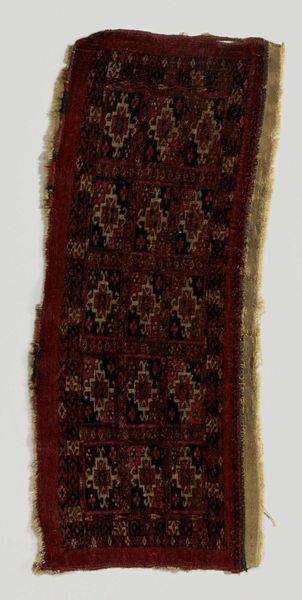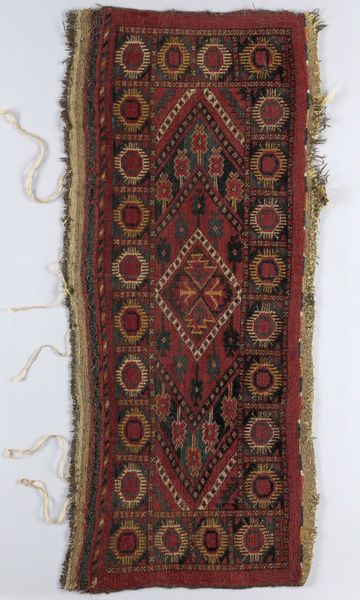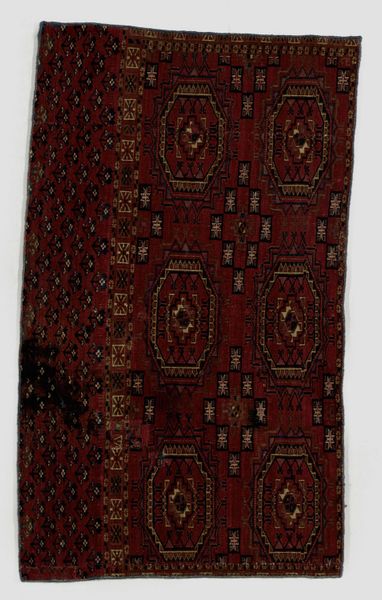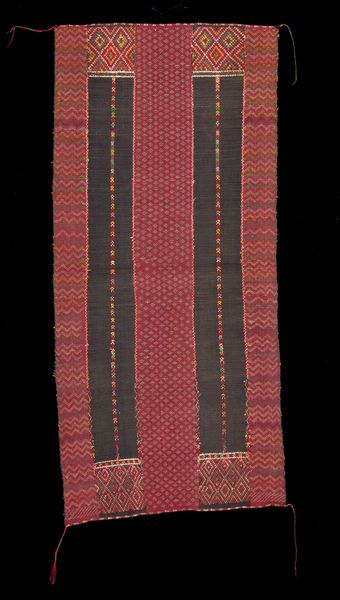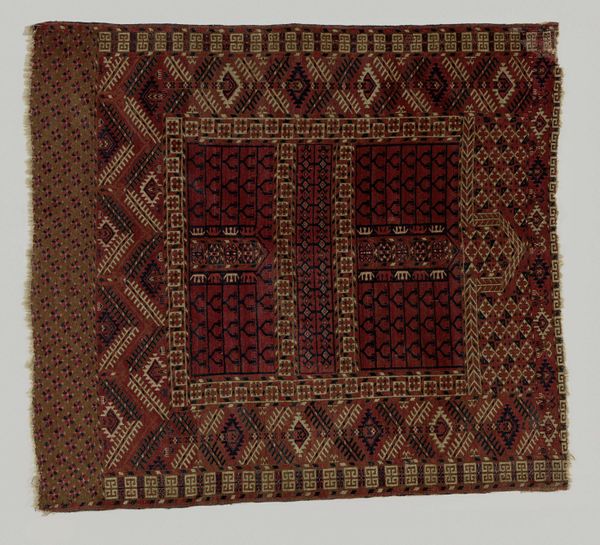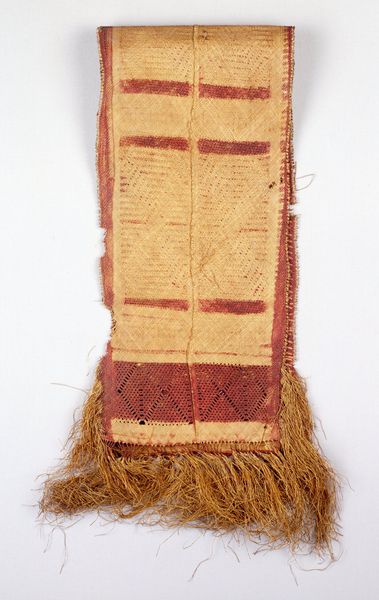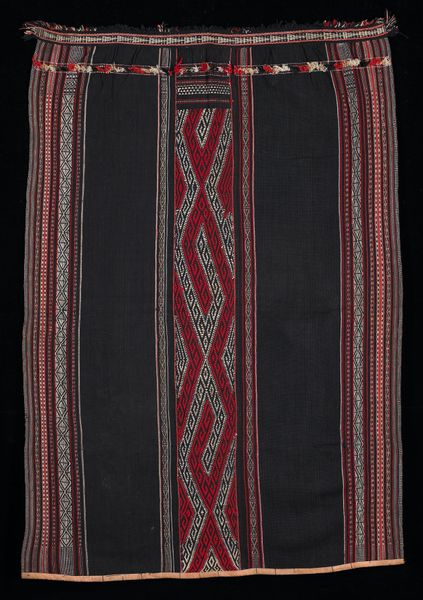
weaving, textile
#
weaving
#
textile
#
geometric pattern
#
organic pattern
#
geometric
#
islamic-art
Dimensions: height 42 cm, width 154 cm
Copyright: Rijks Museum: Open Domain
Curator: Here we have a camel cover, "Dekkleed voor een kameel," crafted by the Ersari people sometime between 1875 and 1900. What are your initial thoughts? Editor: Immediately, I notice the texture. The fringe, the tightly woven geometric patterns… It makes me want to touch it, to feel the weight of the wool, to understand the labor involved. Curator: The cover reflects more than just functional use, its intricate design speaks to the sophisticated aesthetic sensibilities within Ersari culture during the late 19th century. These textiles functioned as symbols of status and cultural identity. Editor: And it's interesting to consider this in a material sense. What dyestuffs were used? How was the wool prepared? Each choice reflects an understanding of resources and processes deeply embedded in their way of life. Curator: Absolutely. The color palette and design motifs would likely have been passed down through generations, bearing significant meaning. Consider how trade routes and social interactions of that time shaped the design itself, acting as an intricate record of its history. Editor: I find myself drawn to the asymmetry and apparent imperfections, it tells me more about the weaver. We need to respect the skills involved to turn raw material into complex structure that communicates with purpose. This is so far away from our machine production. Curator: And how this was perceived in the broader art world matters. As it transitioned into collections and exhibitions, it navigated changing tastes. Islamic art and 'Oriental' styles experienced different degrees of popularity and acceptance through colonial perspectives. Editor: Precisely. Seeing something like this asks that we to question our understanding of the division between ‘high art’ and what's considered utilitarian, how cultural objects acquire and retain value. It asks questions about the artist's daily labour as well as our consumption habits today. Curator: The beauty of studying such an object lies in uncovering its interwoven narratives—personal, societal, and artistic. We can interpret its legacy with ever growing historic knowledge. Editor: Agreed, studying such objects provides endless insights into the values placed on skilled work and the life behind this pattern, pushing for appreciation and contemplation in art and life.
Comments
No comments
Be the first to comment and join the conversation on the ultimate creative platform.
